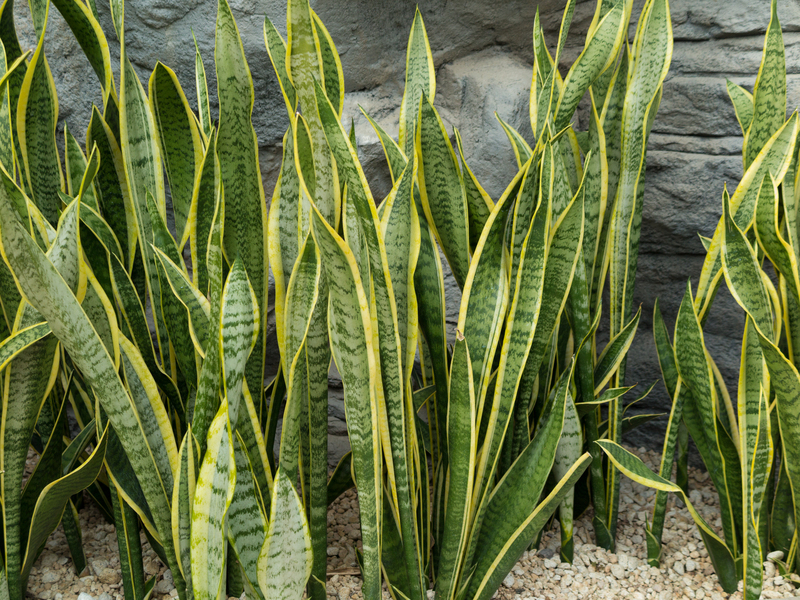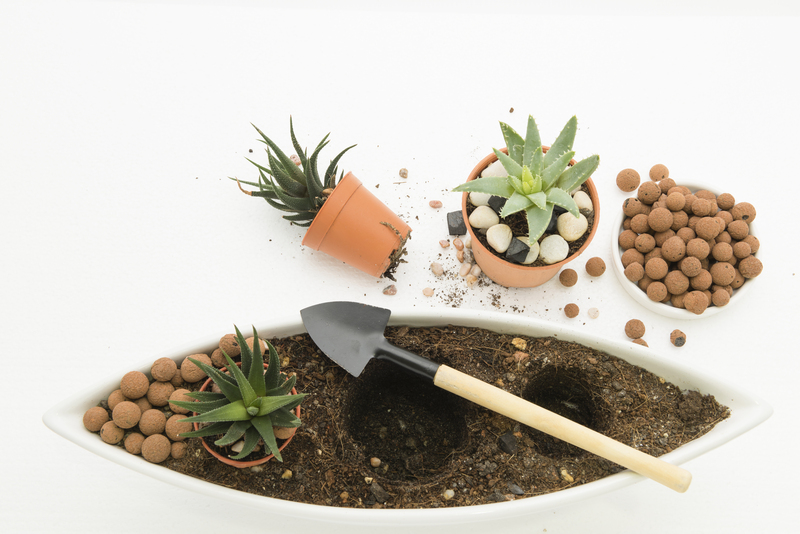Developing a Secure and Inviting Garden Space for Kids
Posted on 12/06/2025
Developing a Secure and Inviting Garden Space for Kids
Every parent desires a safe and stimulating outdoor environment for their children. Developing a secure and inviting garden space for kids is an enriching project that encourages play, creativity, learning, and connection with nature. This comprehensive guide explores how to design child-friendly gardens that are fun, secure, and foster child development.
Why Create a Child-Friendly Garden?
A garden crafted with children in mind isn't just a play area--it's a natural classroom, a space for imagination, and a way to instill lifelong appreciation for the environment. Developing a garden space for kids goes beyond aesthetics; it's about inviting exploration while ensuring well-being and safety.
- Outdoor play boosts health by increasing physical activity and reducing screen time.
- Natural environments enhance cognitive development, curiosity, and problem-solving.
- Sensory experiences, such as touching different plants or hearing bird songs, support learning.
- Secure surroundings provide peace of mind to parents and caretakers.

Understanding the Essentials of a Safe Garden
The cornerstone of developing a secure and inviting garden space for kids is understanding potential hazards and ways to mitigate them effectively.
Common Garden Hazards for Children
- Toxic plants can cause allergic reactions, rashes, or poisoning if ingested.
- Water features, even shallow ponds, may pose drowning risks.
- Sharp tools and fencing may lead to injury.
- Pesticides and fertilizers could be harmful if accessed by children.
- Slippery or uneven surfaces can cause falls.
Being aware of these hazards is the first step toward designing a child-safe garden. Let's explore how to address each risk and transform your backyard into an inviting oasis for kids.
Steps to Develop a Secure and Inviting Garden Space for Kids
1. Assess Your Garden Site
Begin by evaluating your garden area. Consider the size, sunlight, soil type, existing plants, and structures. Map out potential play zones and identify any risks that need immediate attention.
2. Ensure Childproof Boundaries
- Install secure fencing around the perimeter. Fences should be at least 4 feet tall, with no climbable footholds.
- Use lockable gates to control access.
- Consider natural barriers like thick shrubs--just avoid thorny or toxic species.
Well-defined boundaries give children a sense of freedom while keeping them safely contained.
3. Remove Poisonous Plants and Hazards
Review a list of garden plants safe for kids and remove any toxic varieties. Examples to avoid include foxglove, oleander, yew, and certain mushrooms.
- Check for sharp branches, thorny bushes, and stinging nettles.
- Eliminate trip hazards like exposed roots or uneven pathways.
- Secure or remove all chemicals and tools.
4. Choose Safe and Durable Landscaping Materials
- Soft surfaces like grass, rubber mulch, or well-finished bark provide cushion for falls.
- Steer clear of pebbles, gravel, or hard concrete in play areas.
- Use non-slip materials for walkways and patios.
5. Plan Engaging Play Elements
A truly inviting kids' garden includes interactive areas to encourage movement, discovery, and relaxation:
- Swings and climbing structures: Use robust, age-appropriate play equipment on shock-absorbing surfaces.
- Sandpits and digging areas: Encourage tactile play with dedicated digging zones.
- Secret hideaways: Small willow domes, playhouses, or teepees make magical spaces for imagination.
- Balance beams or stepping stones: Challenge coordination and gross motor skills.
- Mini wildlife habitats: Bird feeders, bug hotels, and butterfly gardens foster nature observation.
It's important to match features to your child's age and abilities. Regularly inspect equipment for wear and safety.
6. Foster a Sensory Garden Experience
Sensory gardens stimulate sight, touch, sound, taste, and smell. To make your children's garden inviting and enjoyable for all the senses:
- Tactile plants: Lamb's ear, ornamental grasses, and ferns have interesting textures.
- Fragrant flowers: Lavender, mint, and sweet peas offer soothing scents.
- Edible crops: Strawberries, cherry tomatoes, nasturtiums, and blueberries are safe to taste and fun to grow.
- Wind chimes, water features, or rustling leaves add sound elements.
- Visually vibrant flowers: Zinnias, sunflowers, and marigolds brighten the environment.
7. Provide Shade and Shelter
- Install shade sails, trees, or gazebos to prevent sunburn and overheating.
- Ensure children have somewhere to rest--benches, hammocks, or picnic spots are inviting for breaks.
Accessible water stations and hats are also vital for sun safety.
8. Encourage Nature Play and Learning
A child-friendly garden isn't just about play equipment. It's about sparking curiosity and respect for the natural world:
- Plant a veggie patch: Let kids dig, sow seeds, and harvest their own crops.
- Set up a compost bin: Teach children about recycling garden waste.
- Observe wildlife: Keep a bug journal or bird-watching log.
- Craft with nature: Use leaves, pinecones, and stones for art projects.
9. Safety Guidelines and Supervision
Even after implementing all precautions, supervision remains essential. Instruct kids on safe garden play, establish boundaries, and use regular checks to ensure gates, fences, and play equipment are secure and in good repair.
- Avoid water hazards. If you have water features, supervise closely or install childproof covers.
- Clear toys and tools after use. Keeping pathways clear reduces trip risks.
- Regularly inspect for animal droppings, broken glass, and hazardous objects.
Tips for an Attractive and Functional Kids' Garden
- Get kids involved in gardening, choosing plants, and designing features.
- Keep it low-maintenance for busy families--choose resilient plants and easy-care surfaces.
- Rotate play elements periodically to keep the garden stimulating as children grow.
- Use bold colors and fun garden art for visual appeal.
- Create pockets of interest or "rooms" to break up space (e.g., a quiet nook, an active play area, and a planting zone).
Choosing the Best Plants for a Child-Safe Garden
Not every garden favorite is appropriate for children. The key is to select non-toxic, resilient, and interactive plants. Below is a selection of safe choices for secure and inviting gardens for kids:
- Sunflowers: Fast-growing, visually striking, and great for seed harvesting.
- Snapdragons: Fun for little hands to "snap" the flowers open and closed.
- Marigolds: Bright, pest-repellent, and suitable for borders.
- Strawberries and blueberries: Safe, edible, and loved by children.
- Mint and basil: Aromatic herbs that hold up to rough handling and can be used in snacks.
- Grasses: Soft ornamental varieties for touching and swaying in the breeze.
- Pumpkins and gourds: Fun to grow and harvest in autumn.
- Nasturtiums: Edible flowers with peppery leaves, ideal for salads and visual interest.
Always check with your local nursery or gardening authority for region-appropriate plant lists.
Encouraging Environmental Responsibility from a Young Age
Building a secure and inviting garden space for children provides numerous opportunities to foster environmental stewardship.
- Teach composting and recycling garden waste.
- Install rain barrels for water conservation education.
- Grow pollinator-friendly plants and discuss the importance of bees and butterflies.
- Promote gentle handling of plants and respect for all living creatures.
*Even small lessons learned in the garden can shape lifelong ecological habits!*

Frequently Asked Questions: Safe and Inviting Kids' Gardens
What is the safest surface under playground equipment?
Engineered wood fiber, playground-grade rubber mulch, and well-maintained grass are the safest options for cushioning falls.
Can pets and kids share the same garden space?
Yes, but ensure boundaries are clear and avoid animal waste contamination using separate toilet areas for pets.
How do I deal with garden pests safely?
Avoid chemical pesticides. Use organic controls, companion planting, or physical removal to keep gardens eco-friendly and harmless for children.
How often should I inspect kids' play equipment?
Check monthly for loose screws, splinters, and wear, especially after storms or heavy use.
Are edible plants safe in a children's garden?
Yes, if you select non-toxic, pesticide-free varieties and teach children which plants are safe to eat.
Conclusion: The Lasting Joy of a Secure and Inviting Children's Garden
Investing in developing a secure and inviting garden space for kids is a gift that yields endless rewards. With thoughtful design and ongoing care, your garden becomes a playground, classroom, sanctuary, and a place for magical childhood memories to grow. By blending imaginative play areas, sensory delights, and rigorous safety, you can create a garden that welcomes exploration and nurtures future nature lovers.
Start planning your child-friendly garden today--and watch your children thrive in an outdoor wonderland that's as secure as it is inviting!

